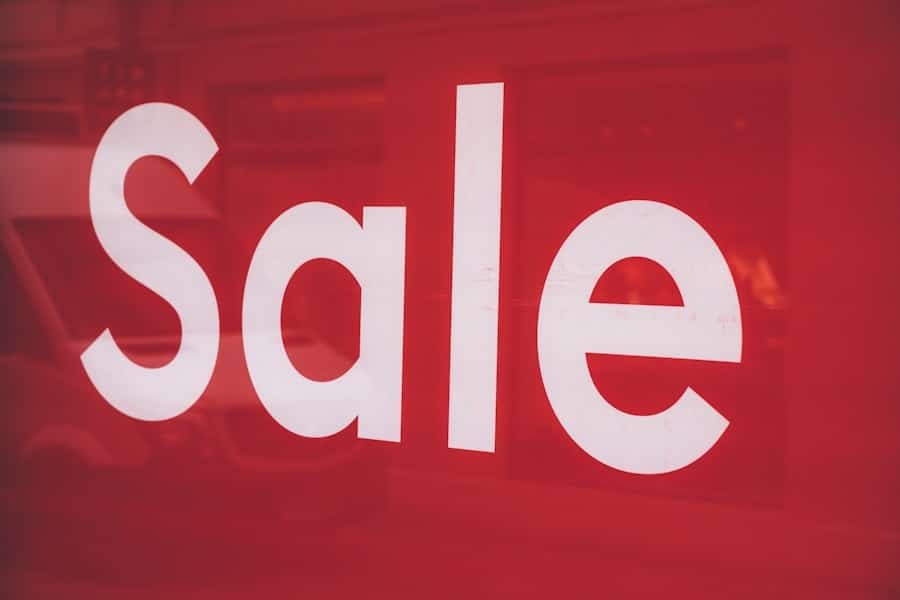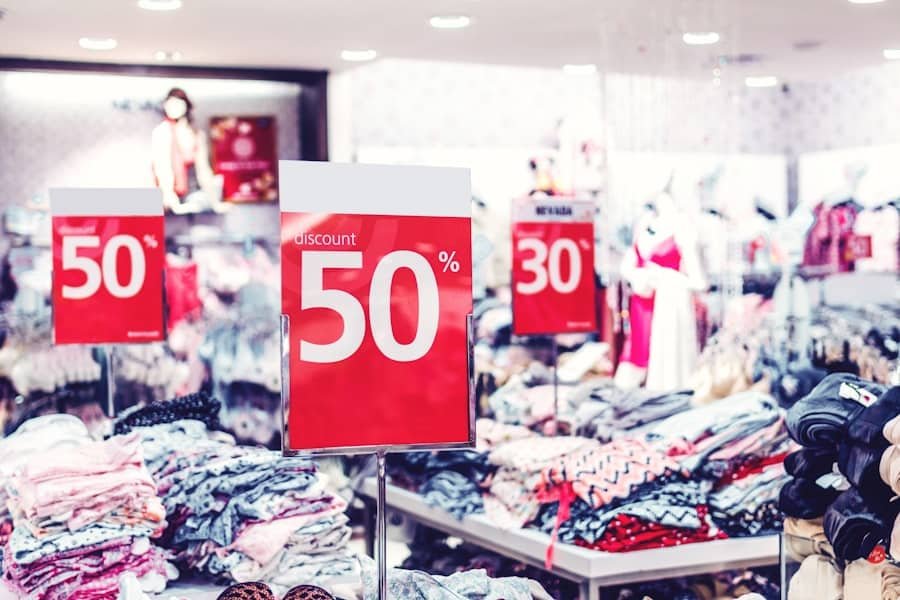Loss leader pricing is a marketing strategy where a product is sold below its market cost to attract customers. This approach aims to draw consumers into a store, anticipating they will purchase additional, more profitable items. Retailers, particularly in competitive markets, employ this tactic to gain an edge and increase foot traffic.
The goal is to build customer loyalty and boost overall sales, though this strategy carries both risks and benefits that require careful consideration. This pricing concept has been utilized in the retail industry for many years to drive sales and expand market share. It operates on the principle that customers are more inclined to make additional purchases once in the store, even if the initial product is sold at a loss.
This strategy can be especially effective for retailers selling everyday items like groceries, household goods, and electronics. By offering significant discounts on select products, retailers can attract price-sensitive customers and encourage impulse buying. However, careful selection of loss leader products is crucial, as not all items will result in increased sales and profitability.
Key Takeaways
- Loss leader pricing is a strategy where a product is sold at a loss to attract customers and increase sales of other profitable products.
- Loss leader pricing can lead to increased sales and customer loyalty, as customers are drawn in by the low prices and may end up purchasing other items as well.
- Implementing loss leader pricing can help a company gain market share by attracting new customers and increasing brand visibility.
- Consumer behavior is influenced by loss leader pricing, as customers are more likely to make additional purchases when they perceive a good deal.
- Strategies for implementing loss leader pricing include carefully selecting which products to offer at a loss and effectively promoting the loss leader products to attract customers.
The Relationship Between Loss Leader Pricing and Sales
The relationship between loss leader pricing and sales is complex and multifaceted. On one hand, offering products at a loss can lead to an immediate increase in sales as customers are drawn to the discounted items. This can be particularly effective in driving foot traffic and increasing overall sales volume.
However, the success of this strategy ultimately depends on the ability of the retailer to convert the increased foot traffic into additional purchases of more profitable items. If customers only purchase the loss leader item and nothing else, the retailer may end up losing money on the transaction. Furthermore, the impact of loss leader pricing on sales can vary depending on the type of product being offered at a loss.
For example, offering a popular and high-demand item at a loss can lead to a significant increase in sales of other items, as customers are more likely to make additional purchases when they are already in the store. On the other hand, offering a less popular or niche product as a loss leader may not have the same impact on overall sales. Therefore, it is crucial for retailers to carefully analyze their target market and customer behavior before implementing a loss leader pricing strategy.
The Impact of Loss Leader Pricing on Market Share

Loss leader pricing can have a significant impact on a retailer’s market share, especially in highly competitive industries. By offering products at a loss, retailers can attract new customers and increase their customer base, ultimately leading to a larger market share. This can be particularly effective for new entrants in the market or for retailers looking to gain a competitive edge over their rivals.
However, it is important for retailers to carefully consider the long-term implications of using loss leader pricing to gain market share, as it can lead to unsustainable pricing practices and erode profitability. Furthermore, the impact of loss leader pricing on market share can vary depending on the competitive landscape and the behavior of rival retailers. In some cases, offering products at a loss may lead to a price war with competitors, ultimately resulting in lower overall profitability for all players in the market.
On the other hand, if used strategically, loss leader pricing can help retailers differentiate themselves from their competitors and gain a larger share of the market. Ultimately, the impact of this pricing strategy on market share depends on how effectively retailers can convert increased foot traffic into long-term customer loyalty and repeat purchases.
Consumer Behavior and Loss Leader Pricing
Consumer behavior plays a crucial role in the success of loss leader pricing strategies. The psychology behind this pricing strategy is based on the assumption that customers are more likely to make additional purchases once they are in the store, even if the initial product is being sold at a loss. This is supported by research in behavioral economics, which suggests that consumers are more likely to make impulse purchases when they perceive a good deal or discount.
Therefore, by offering products at a loss, retailers can tap into this aspect of consumer behavior and drive increased sales. However, it is important for retailers to understand that not all customers will respond in the same way to loss leader pricing. Some customers may only be interested in purchasing the discounted item and may not make additional purchases, while others may be more inclined to explore the store and make impulse purchases.
Therefore, retailers must carefully analyze their target market and customer segments to determine how best to implement loss leader pricing in a way that maximizes its impact on consumer behavior.
Strategies for Implementing Loss Leader Pricing
There are several strategies that retailers can use to effectively implement loss leader pricing and maximize its impact on sales and profitability. One common approach is to offer loss leader products that are complementary to other, more profitable items. For example, a grocery store may offer milk at a loss in the hope that customers will also purchase other groceries while they are in the store.
This can be particularly effective in driving overall sales and increasing customer loyalty. Another strategy is to use loss leader pricing as part of a broader promotional campaign. By combining loss leader pricing with other marketing tactics such as advertising, promotions, and loyalty programs, retailers can create a more compelling value proposition for customers and increase the likelihood of additional purchases.
Additionally, retailers can use data analytics and customer insights to identify which products are most likely to drive increased sales when offered as loss leaders.
The Risks and Benefits of Loss Leader Pricing

There are both risks and benefits associated with using loss leader pricing as a marketing strategy. One of the main benefits is that it can lead to an immediate increase in foot traffic and sales volume, ultimately driving higher overall profitability. Additionally, offering products at a loss can help retailers differentiate themselves from their competitors and gain market share.
However, there are also risks associated with this strategy, such as eroding profitability and engaging in price wars with competitors. Furthermore, using loss leader pricing as a long-term strategy can lead to unsustainable pricing practices and negatively impact a retailer’s bottom line. Additionally, there is no guarantee that customers who are attracted by loss leader pricing will make additional purchases or become loyal customers.
Therefore, it is crucial for retailers to carefully weigh the risks and benefits of using this pricing strategy and consider how it fits into their overall business objectives.
Case Studies and Examples of Successful Loss Leader Pricing Strategies
There are numerous examples of successful loss leader pricing strategies that have been implemented by retailers across various industries. One notable example is Amazon’s use of loss leader pricing for its Kindle e-readers. By offering the Kindle devices at a low price point, Amazon was able to attract a large customer base and drive increased sales of e-books and other digital content.
This strategy ultimately helped Amazon establish itself as a dominant player in the e-reader market. Another example is Costco’s use of loss leader pricing for its rotisserie chicken. By offering rotisserie chicken at a low price point, Costco was able to drive foot traffic and increase overall sales volume.
This strategy has been highly effective in driving customer loyalty and increasing market share for Costco in the grocery retail industry. In conclusion, loss leader pricing is a powerful marketing strategy that can drive increased sales and market share for retailers. However, it is important for retailers to carefully consider the impact of this strategy on consumer behavior, sales volume, and overall profitability.
By implementing strategic pricing tactics and leveraging customer insights, retailers can effectively use loss leader pricing to gain a competitive edge in their respective industries.
For more insights on pricing strategies and their impact on sales and market share, check out this article on The Econosphere’s website: Pricing Strategies and Sales Impact. This article delves into the various pricing strategies that businesses can employ and how they can affect sales and market share. It provides valuable information on how businesses can use pricing to their advantage in a competitive market.
FAQs
What is loss leader pricing?
Loss leader pricing is a strategy in which a product is sold at a price below its market cost in order to attract customers and stimulate sales of other profitable products.
How does loss leader pricing impact sales?
Loss leader pricing can lead to an increase in sales volume as customers are attracted to the discounted product. This can result in higher overall revenue, despite the initial loss on the discounted item.
What is the impact of loss leader pricing on market share?
Loss leader pricing can help a company gain market share by attracting new customers and increasing brand visibility. It can also help a company retain existing customers by offering competitive prices.
What are the potential drawbacks of using loss leader pricing?
One potential drawback of using loss leader pricing is that it can erode profit margins if not managed carefully. Additionally, it can attract price-sensitive customers who may not be loyal to the brand and may only purchase discounted items.
How can companies effectively implement loss leader pricing?
Companies can effectively implement loss leader pricing by carefully selecting which products to discount, ensuring that the discounted items are complemented by other profitable products, and monitoring the impact on overall sales and profitability.








